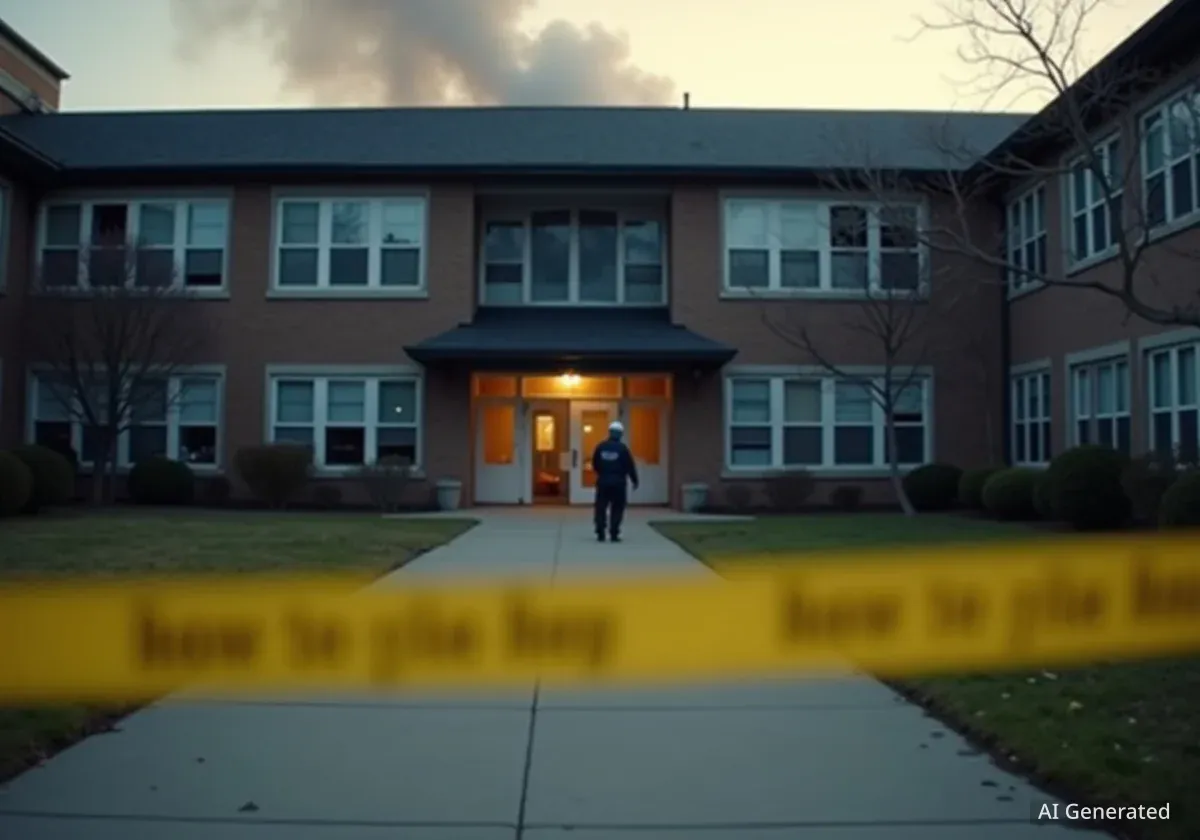Young women attending college now face a significantly higher risk of sexual violence than their peers who are not enrolled, a stark reversal of previous trends, according to new research. The study, analyzing national crime data, found that the risk for college-enrolled women was 74% higher between 2015 and 2022 compared to their non-college counterparts.
The findings highlight a particularly alarming trend for students living on campus. Women residing in university housing experienced rates of sexual violence three times higher than students who commute, creating new urgency for campus safety protocols.
Key Takeaways
- From 2015 to 2022, college women aged 18-24 had a 74% higher six-month risk of sexual violence than non-enrolled women.
- This reverses a long-standing pattern where non-college women were previously considered at higher risk.
- Women living on campus face a rate of sexual violence three times higher than their commuting peers.
- The study analyzed data from over 61,000 women surveyed in the National Crime Victimization Survey from 2007 to 2022.
A Surprising Reversal in Risk
A comprehensive analysis of national crime statistics has uncovered a disturbing shift in the landscape of sexual violence for young women in the United States. Researchers from Washington State University found that, contrary to years of data, being enrolled in college is now associated with a greater risk of experiencing sexual violence.
The study, published in the Journal of American College Health, examined data from the National Crime Victimization Survey. It compared two distinct periods: 2007-2014 and 2015-2022. While the earlier period showed similar risk levels for both groups, the more recent data revealed a dramatic change.
"To an extent, I was surprised," said Amelie Pedneault, an associate professor at WSU and co-author of the report. "These comparisons had always shown that women who were not attending college were at higher risk. This was cited in multiple studies beforehand. Now it’s the opposite."
This reversal points to a complex set of factors that may be making college environments, once perceived as safer, more dangerous for young women.
The On-Campus Danger Zone
The study's most pointed finding concerns the specific environment of on-campus living. The data indicates that the risk is not uniform across all college students. Women who live in dormitories or other university-managed housing are exposed to a significantly elevated threat level.
Between 2015 and 2022, on-campus residents experienced a rate of sexual violence that was three times higher than that of students who lived off-campus and commuted. This is a critical change from the 2007-2014 period, when the risks for both on-campus and commuter students were statistically similar.
By the Numbers
During the 2015-2022 period, an estimated 1 in 100 women living on campus reported an instance of sexual violence during each six-month survey period. This figure represents the highest prevalence among all groups studied.
Lead author Kathryn DuBois, an associate professor at WSU Vancouver, emphasized the need for immediate action from university administrators.
"Any sexual violence is too much," DuBois stated, urging officials to find ways to enhance campus safety without diminishing the communal benefits of university life. "The university experience is so valuable, especially the on-campus experience."
Researchers suggest that aspects of college life, including living arrangements and social norms, can create what they term a "zone of vulnerability," particularly for first-year students who are new to the environment.
Searching for an Explanation
While the study definitively identifies the trend, it does not pinpoint a single cause for this dramatic shift. The researchers note that the 2015-2022 timeframe coincided with major societal changes that could have influenced both the occurrence and reporting of sexual violence.
A Shifting Social Landscape
The period covered by the study's most alarming findings saw the rise of significant social movements. The campus anti-rape movement gained momentum, and the #MeToo movement brought unprecedented global attention to sexual assault and harassment. Simultaneously, there was a documented rise of misogynistic online communities. These competing social forces may have contributed to a complex environment of increased awareness and potential backlash.
One possibility is that increased awareness led to more women identifying and reporting their experiences as sexual violence. However, the researchers found that the proportion of reported incidents classified as rape or violent assault remained consistent across both time periods. This suggests the increase is not solely attributable to a change in perception or reporting behavior but reflects a genuine rise in incidents.
Focusing on Prevention
The study's authors stress that understanding and preventing these crimes is paramount. The focus, they argue, must shift toward addressing the motivations and behaviors of offenders.
Amelie Pedneault advocated for proactive educational measures that begin long before students arrive on campus. She emphasized the importance of teaching healthy relationships and consent, suggesting that such education should start as early as middle school.
For universities, the findings present a clear call to action. They must re-evaluate current safety measures, particularly within residential life programs. This includes examining everything from physical security in dormitories to the social conventions that may enable perpetrators.
The study provides a critical data-driven foundation for a renewed conversation about how to protect students and ensure that the college experience is a safe and enriching one for everyone.





